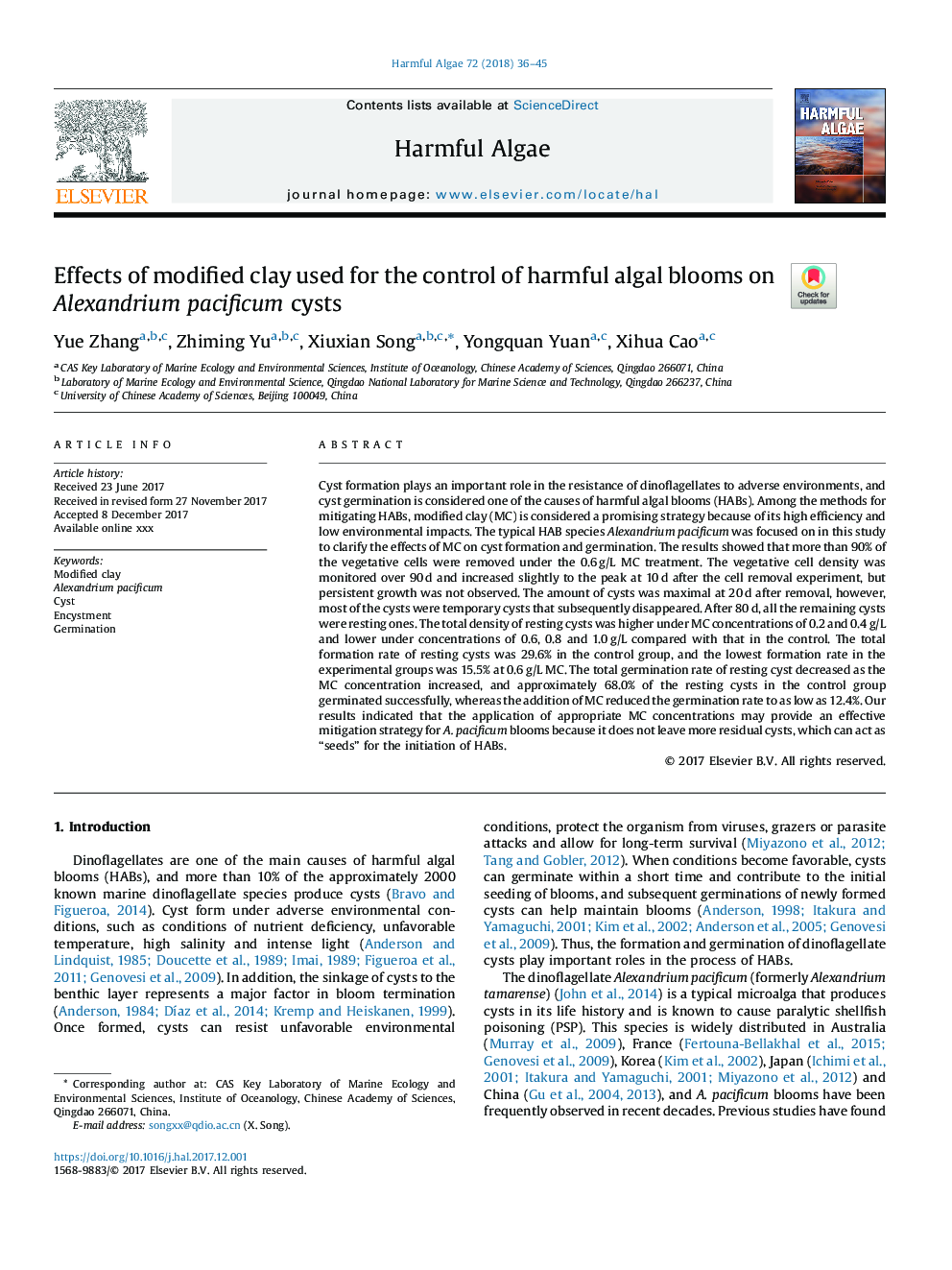| Article ID | Journal | Published Year | Pages | File Type |
|---|---|---|---|---|
| 8885711 | Harmful Algae | 2018 | 10 Pages |
Abstract
Cyst formation plays an important role in the resistance of dinoflagellates to adverse environments, and cyst germination is considered one of the causes of harmful algal blooms (HABs). Among the methods for mitigating HABs, modified clay (MC) is considered a promising strategy because of its high efficiency and low environmental impacts. The typical HAB species Alexandrium pacificum was focused on in this study to clarify the effects of MC on cyst formation and germination. The results showed that more than 90% of the vegetative cells were removed under the 0.6â¯g/L MC treatment. The vegetative cell density was monitored over 90â¯d and increased slightly to the peak at 10â¯d after the cell removal experiment, but persistent growth was not observed. The amount of cysts was maximal at 20â¯d after removal, however, most of the cysts were temporary cysts that subsequently disappeared. After 80â¯d, all the remaining cysts were resting ones. The total density of resting cysts was higher under MC concentrations of 0.2 and 0.4â¯g/L and lower under concentrations of 0.6, 0.8 and 1.0â¯g/L compared with that in the control. The total formation rate of resting cysts was 29.6% in the control group, and the lowest formation rate in the experimental groups was 15.5% at 0.6â¯g/L MC. The total germination rate of resting cyst decreased as the MC concentration increased, and approximately 68.0% of the resting cysts in the control group germinated successfully, whereas the addition of MC reduced the germination rate to as low as 12.4%. Our results indicated that the application of appropriate MC concentrations may provide an effective mitigation strategy for A. pacificum blooms because it does not leave more residual cysts, which can act as “seeds” for the initiation of HABs.
Related Topics
Life Sciences
Agricultural and Biological Sciences
Aquatic Science
Authors
Yue Zhang, Zhiming Yu, Xiuxian Song, Yongquan Yuan, Xihua Cao,
